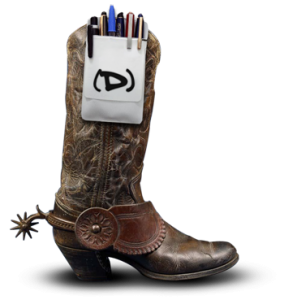Jared Spool presented “The Secret Lives of Links” as the closing keynote at Big Design 2012. Links do not get enough of our attention and too often are viewed as “just a way to connect stuff.” The fact that websites still have links with “click here” and “learn more” (first and second place for worst links, respectively) demonstrates how links are too often not designed with the same care and attention given to other website elements. Spool pointed out that links have secret lives and yearn for better design to

- “Deliver users to their desired objective
- Emit the right scent [of information]
- Look good, while still looking like a link
- Do what the user expects.”
For links to accomplish the first two goals, link text need to be meaningful and sustain the “scent of information” that the user is following. Meaningful text aligns to trigger words, the language users usually end up putting into search when links fail. Three signs in the clickstream that links, and therefore the user experience, has failed are
- Use of the Back button, the “Button of Doom”
- Pogo sticking, moving from gallery page to content page and back and forth repeatedly
- Use of Search, or “BYOL: Build Your Own Links”
The cost of these failures is high. Just one example was that when a clickstream includes at least one Back button, only 18% of users succeed. With two back buttons in the flow, success drops to 2%. That’s a lot of visitors not reaching your content!
Use of search may be a surprising sign of failure. Spool’s research shows that site visits that include use of search succeed 30% of the time. Without search, users achieve 53% success. He shared the example of when IBM put the trigger words from search streams on their page to sell laptops, the change resulted in an increase of sales by $300,000.
Links can now look good and achieve their third desire. They no longer have to be blue and underlined, two attributes that actually reduce readability. However, links identified by other attributes still have to be consistent and clear. Failing to make clear what on a page is a link forces users to “do what we’ve been trained to do. We wave our mouse over the page until the browser give us the finger.”
Finally, links do what users expect when they help users accomplish their goals, not the website’s goals, and when they help users stay on the straight line to the information they are seeking. Hiding text and forcing users to scrub the screen to find their way is distracting and may lose the user completely. Since Spool has observed that users don’t move a mouse until they decide what they want to do, designs like mega menus become a “shell game” that forces users to hunt for information. He rejects the notion that such designs reduce clutter because users don’t defined clutter the way designers often do. For users, clutter isn’t about density of content but about “stuff they don’t need.” He also noted that the problem gets worse when flyouts don’t support linear movement or stay in place when the user tries to access the flyout.
Spool concluded by saying, “Design links well and think about them and users will love you and the site.” I hope this summary of the key points of the far-more entertaining presentation will encourage more organizations to rethink links and design them as carefully as other elements on their website.
